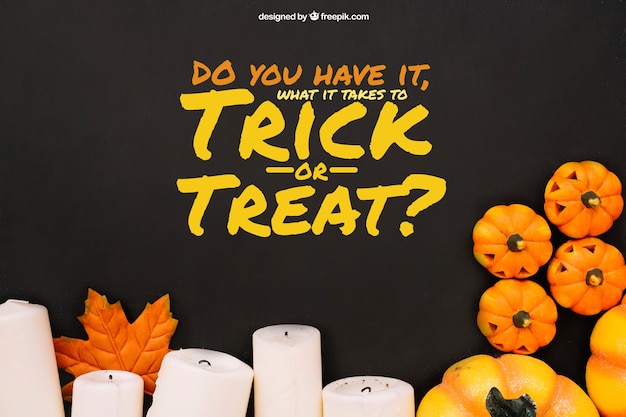10 Fascinating Facts About Halloween

The word Halloween comes from All Hallows’ Eve, which means the evening before All Saints’ Day.
Halloween originated from the ancient Celtic festival of Samhain, marking the end of harvest season and the beginning of winter.
On Halloween night, it was believed that the boundary between the living and dead was blurred, allowing spirits to roam freely.
Jack o’ lanterns were originally carved from turnips, not pumpkins.
Black cats are considered both good and bad luck on Halloween, depending on different cultures and beliefs.
The largest pumpkin ever grown weighed over 2,500 pounds.
Ireland is typically credited as the birthplace of Halloween.
Trick-or-treating is believed to have originated from the custom of leaving food and offerings outside homes for wandering spirits.
The fear of Halloween is called Samhainophobia.
Over 35 million pounds of candy corn are produced each year for Halloween.
The colors associated with Halloween, orange and black, are said to represent harvest and death.
Halloween is the second highest grossing commercial holiday, after Christmas.
Approximately 99% of all pumpkins sold are used as jack o’ lanterns for Halloween.
The largest recorded pumpkin pie ever made weighed over 3,699 pounds.
Halloween is celebrated in various countries around the world, including the United States, Canada, Ireland, and the United Kingdom.
October 31st is also marked as National Magic Day in the United States.
10 Fascinating Facts About Halloween part 2
The Mexican celebration of the Day of the Dead has similar roots to Halloween, focusing on honoring deceased loved ones.
In some European countries, leaving a lit candle in the window on Halloween is a way to guide spirits back to the afterlife.
Halloween is believed to have been influenced by the Gaelic festival Samhain, Roman festivals, and Christian holidays like All Saints’ Day.
In the United States, approximately $9 billion is spent on Halloween-related expenses every year.
Harry Houdini, the famous magician, died on Halloween in 19
Some historians believe that bobbing for apples, a popular Halloween game, originated from a Roman festival honoring Pomona, the goddess of fruit.
The iconic witches’ broomstick is said to symbolize female independence, as it was used by women accused of witchcraft to apply hallucinogenic ointments.
Halloween is not widely celebrated in Australia and New Zealand, as it falls during their spring season.
The world record for the largest gathering of people dressed as witches took place in 2016 in the Netherlands, with 1,607 participants.
The famous Halloween song Monster Mash was released in 1962 and has since become a Halloween staple.
In Sweden, Halloween is called Alla helgons dag, and it is spent visiting and decorating the graves of loved ones.
The first known instance of trick-or-treating being used in print occurred in 1927 in Blackie, Alberta, Canada.
According to superstition, if a bat flies into your home on Halloween, it is considered a sign that spirits are near.
The Salem Witch Trials, a series of hearings and prosecutions, took place in colonial Massachusetts in the late 1600s, adding to the prominence of witches in Halloween folklore.
Halloween is the third most popular party occasion, after Christmas and New Year’s Eve.
The phrase trick-or-treat was popularized in the United States in the 1930s, with the giving of treats intended to ward off pranks by mischievous children.
In Asia, Halloween is not widely celebrated, but some countries have adopted similar traditions, such as the Chinese Ghost Festival.
Orange and black are not typically associated with Halloween in all countries. In some places, purple, green, and white are the predominant colors.
In ancient Celtic cultures, costumes were worn during Samhain to confuse and ward off evil spirits.
The world’s largest Halloween parade, the Village Halloween Parade, takes place each year in New York City.
Halloween masks were traditionally worn to scare away spirits or blend in with them, avoiding any possible harm.
In Scotland, guising is the term for going trick-or-treating, where children perform a song, dance, or joke in exchange for treats.
In the Philippines, Halloween is a time to honor the dead, with families holding reunions at cemeteries and creating makeshift altars.
The original purpose of dressing up in costumes on Halloween was to mimic the spirits and avoid being recognized by them.
Halloween is also known as Snap-Apple Night in Ireland, referring to a traditional game where an apple is hung from a string, and participants attempt to bite into it.
The fear of Halloween is not limited to humans. Dogs and cats can experience anxiety and stress due to the noise and unfamiliar costumes.
Some people believe that Halloween is the best time to try divination methods, such as tarot card reading or apple peeling, to predict the future.
The Irish legend of Stingy Jack, who tricked the devil and was condemned to roam the earth with only a jack o’ lantern, is said to be the inspiration behind carving pumpkins.
The Halloween greeting Happy Halloween dates back to the 16th century, derived from the phrase hallow (meaning holy or saints) and ween (meaning evening).

